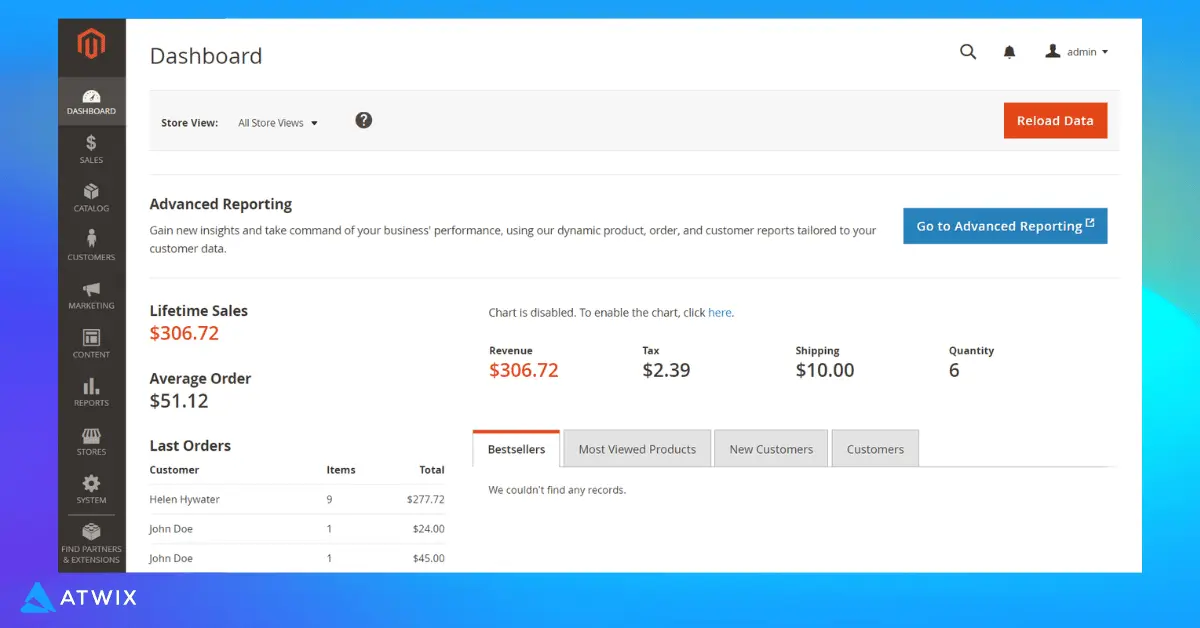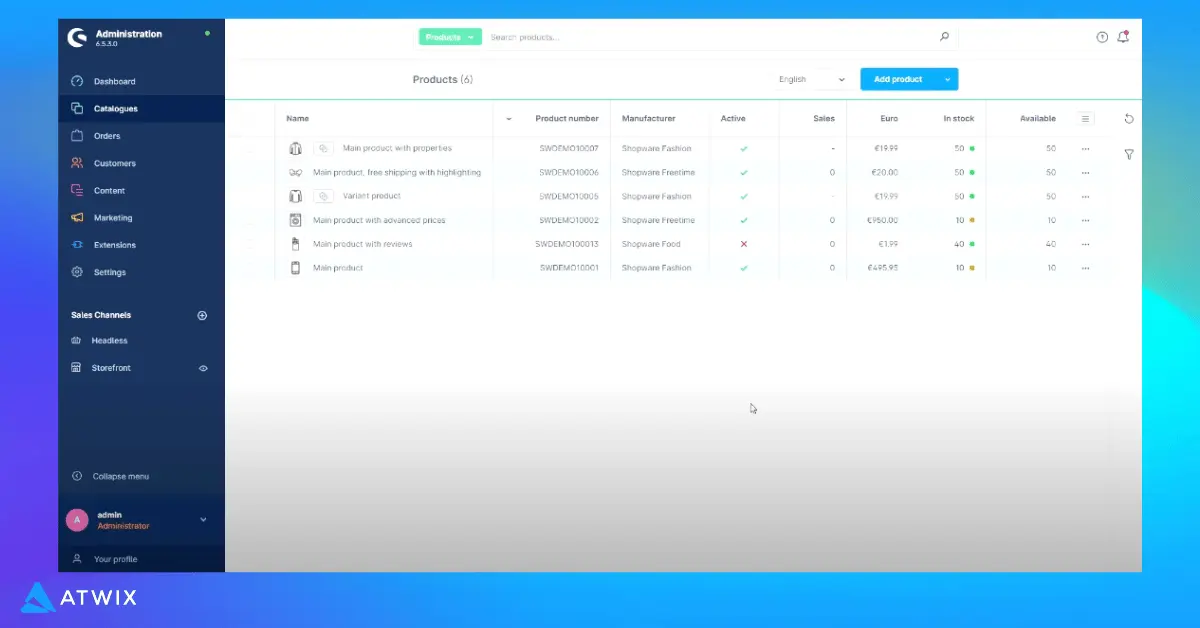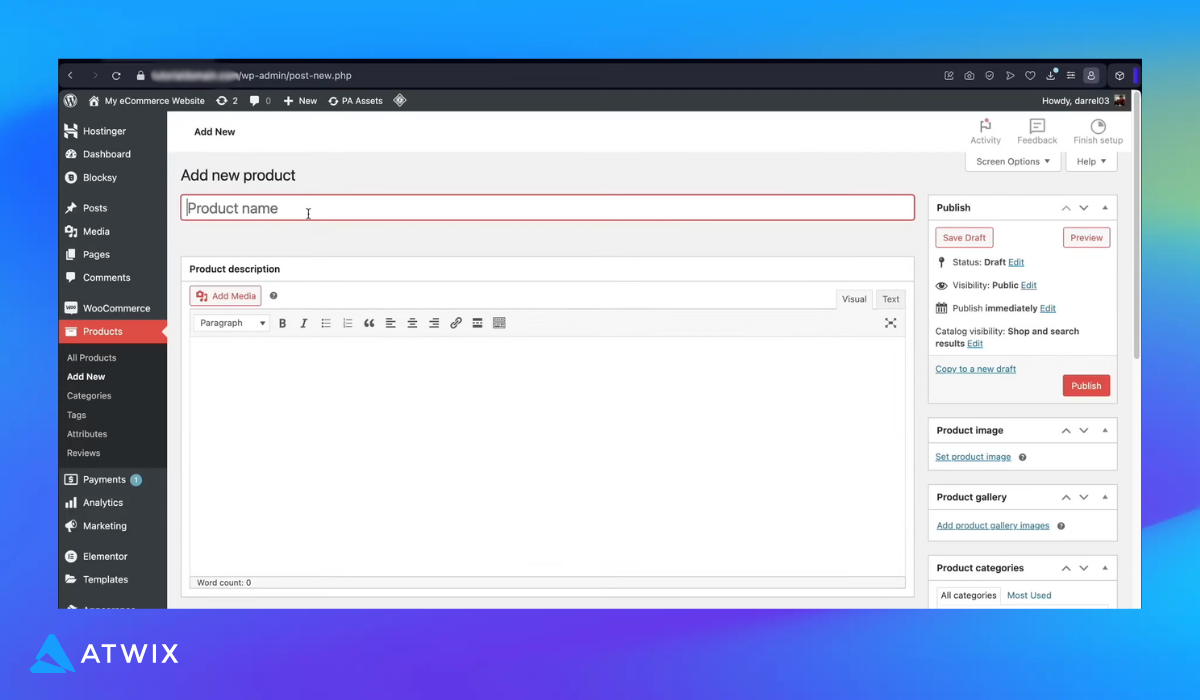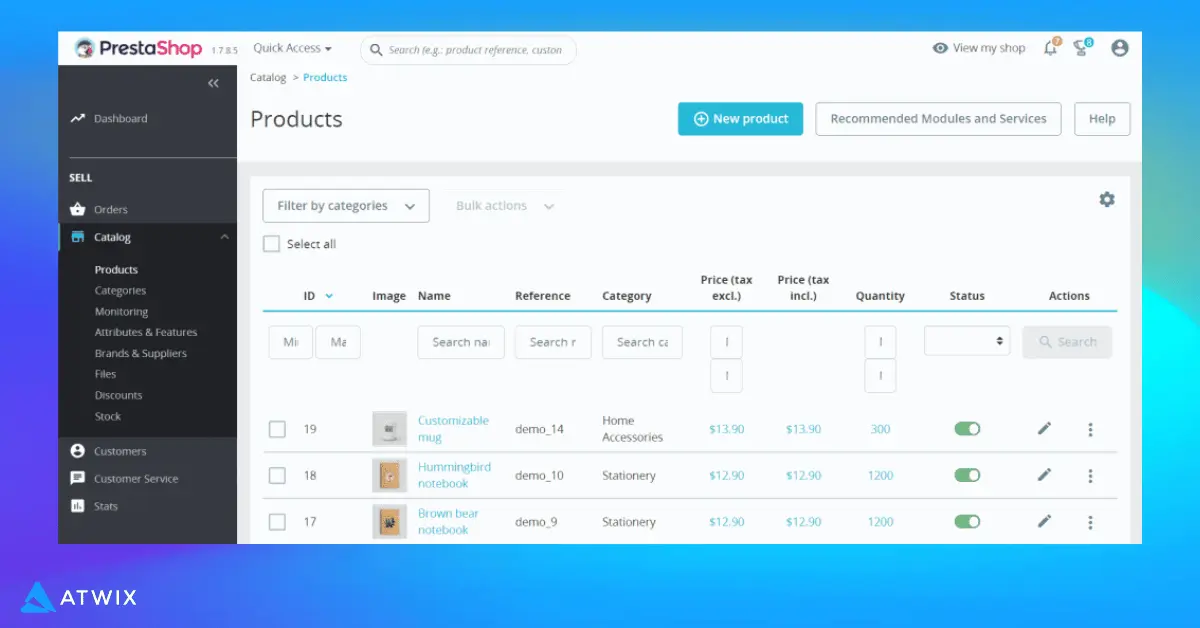What is the best open-source ecommerce platform to use? To answer this question, you need to know how to differentiate them. Brief example, did you know that there’re SaaS and Open-source eCommerce platforms?
In a snap, SaaS, or software as a service, is a subscription-based solution built and maintained by a third-party provider. This way, users can “rent” the software without building and developing the platform themselves, which can be difficult and time-consuming.
Open Source, on the other hand, is a platform that provides users with complete access to the source code, allowing them to change and adapt the platform to match their individual needs.
In this post, we’ll be focusing on the most popular Open-source platforms.
Table of Contents:
Pros of Open-Source Ecommerce platform for business
Selecting the right open-source eCommerce solution is critical to building a scalable and successful online store. Unlike SaaS platforms, open-source eCommerce platforms provide complete control over customization, integrations, and features, allowing businesses to tailor their stores to meet unique needs. Below are the essential factors to consider when evaluating the best open-source eCommerce platform for your business:
1. Flexibility and Customization
- Customization Options: The platform should allow extensive customization to tailor the store according to your specific requirements.
- Scalability: Ensure the platform can grow with your business, handling increased traffic and larger product catalogs seamlessly.
2. Community Support and Resources
- Active Community: A large, active community can provide valuable support, resources, and plugins/extensions.
- Documentation: Comprehensive documentation is crucial for troubleshooting and maximizing the platform’s potential.
3. Security
- Built-in Security Features: Look for platforms with robust security measures, including SSL support, data encryption, and compliance with standards like PCI-DSS. Implementing solutions such as Adobe Edge Delivery can further enhance security by ensuring reliable and secure delivery of content across global n
- Regular Updates: Platforms that receive regular updates and patches to address security vulnerabilities are preferable.
4. Integration Capabilities
- API Support: The platform should offer robust APIs for integrating with other systems, such as CRMs, ERPs, and payment gateways.
- Third-party Integrations: Check if the platform supports integrations with popular third-party tools and services that you already use.
5. Ease of Use
- User-friendly Interface: The platform should be easy to navigate and use, even for those with limited technical expertise.
- Setup and Configuration: Look for platforms that offer straightforward setup processes and intuitive configuration options.
6. Cost
- Initial Cost: Consider whether the platform is free or requires an upfront purchase.
- Ongoing Expenses: Evaluate costs associated with hosting, maintenance, and premium plugins or extensions.
7. Performance
- Speed and Responsiveness: The platform should support fast loading times and a smooth user experience.
- Resource Efficiency: Efficient use of server resources ensures that the platform can handle high traffic without performance degradation.
8. SEO Features
- SEO Tools: Built-in SEO tools and capabilities, such as customizable URLs, meta tags, and sitemaps, are essential for improving search engine rankings.
- Mobile Optimization: Ensure the platform supports mobile-friendly designs and responsive templates.
9. Support and Maintenance
- Technical Support: Availability of professional support services can be crucial for resolving issues quickly.
- Developer Community: An active developer community can contribute to the platform’s growth and provide solutions to common problems.
10. Compliance and Legal
- Regulatory Compliance: The platform should support compliance with relevant laws and regulations, such as GDPR for data protection.
- Payment Gateway Support: Ensure the platform supports secure and compliant payment gateways.
Top 6 Open-Source Ecommerce Platforms:
Choosing the best open-source eCommerce platforms can significantly impact your online business’s growth, flexibility, and scalability. Below, we provide an in-depth overview of the top platforms, including their features, pros, and cons, to help you find the ideal solution for your needs.
| Feature | Magento / Adobe Commerce | Shopware | WooCommerce | PrestaShop | Spree Commerce | Drupal Commerce |
|---|---|---|---|---|---|---|
| Customization Options | ✓ High | ✓ High | ✓ Moderate | ✓ Moderate | ✓ High | ✓ Moderate |
| Scalability | ✓ Excellent | ✓ Excellent | ✓ Moderate | ✓ Moderate | ✓ Good | ✓ Moderate |
| B2B/B2C Support | ✓ Both | ✓ Both | ✗ Mainly B2C | ✓ Both | ✓ Both | ✓ Both |
| Community Support | ✓ Strong | ✓ Strong | ✓ Very Strong | ✓ Moderate | ✓ Moderate | ✓ Moderate |
| SEO Features | ✓ Advanced | ✓ Advanced | ✓ Good | ✓ Moderate | ✓ Moderate | ✓ Moderate |
| API Integrations | ✓ Extensive | ✓ Extensive | ✓ Limited | ✓ Limited | ✓ Extensive | ✓ Extensive |
| Mobile Optimization | ✓ Responsive Templates | ✓ Responsive Templates | ✓ Limited | ✓ Responsive Templates | ✓ Responsive Templates | ✓ Limited |
| Security | ✓ Advanced | ✓ Advanced | ✗ Relies on Hosting | ✓ Moderate | ✓ Advanced | ✓ Moderate |
| Ease of Use | ✗ Requires Expertise | ✓ User-Friendly | ✓ Easy | ✓ Easy | ✗ Technical Expertise | ✗ Technical Expertise |
| Pricing | Free/Open Source, Enterprise | Free/Open Source | Free, Plugins Cost Extra | Free, Add-ons Extra | Free, Hosting Extra | Free, Hosting Extra |
1. Magento / Adobe Commerce

Magento / Adobe Commerce remains a leading open-source eCommerce platform, known for its flexibility, scalability, and extensive feature set. It’s ideal for medium to large businesses needing a robust and customizable solution.
Features:
- Comprehensive inventory management
- Advanced SEO capabilities
- Multiple extensions via the Magento Marketplace
- API integrations for third-party tools
- Built-in analytics and reporting
- Magento AI tools further enhance these features, enabling data-driven decision-making and personalized customer experiences.
Pros:
- Supports both B2B and B2C models
- Extremely scalable for growing businesses
- Active community with extensive resources
Cons:
- Requires technical expertise to manage
- High initial and ongoing development costs
Pricing:
- Free for the open-source version; enterprise pricing available on request.

Another advantage of adopting Magento is the variety of compatible plugins and extensions that you can use. As a result, this platform offers consumers freedom and indefinite scalability.
If you’d like to know more about building an exceptional eCommerce experience with Magento or Adobe Commerce, book a free consultation with Atwix or learm more about our Magento 2 Development services.
2. Shopware

Shopware is a scalable platform using modern technologies like Symfony, Twig, and Vue.js. It’s suitable for medium to large businesses, especially in the EU. Known for its intuitive design and modern approach, Shopware provides robust tools for both developers and marketers. It offers AI-driven automation and personalization features, making it ideal for businesses focused on delivering tailored shopping experiences.
Features:
- AI tools for product descriptions
- Automation for tasks like order fulfillment
- Rule-based shipping, payment, pricing, and promotions
- Live video events for customer engagement
- B2B features like user role management and customer-specific pricing
Pros:
- Highly scalable and developer-friendly
- Advanced B2B-specific features
- Strong EU-based community support
Cons:
- Smaller market share compared to Magento
- Limited documentation outside of Europe
Pricing:
- Free to download; managed hosting plans start at $12 per month.
3. WooCommerce
WooCommerce is a popular open-source eCommerce solution designed for WordPress. It’s perfect for businesses familiar with WordPress looking to add eCommerce functionality. As a plugin, it seamlessly integrates with WordPress websites, allowing users to transform their blog or portfolio site into a full-fledged online store. WooCommerce offers a vast range of customization options through its plugin library, making it versatile for businesses of all sizes. It’s particularly suited for small and medium-sized businesses that need an affordable yet feature-rich eCommerce platform.

Features:
- Seamless integration with WordPress
- Extensive customization options with thousands of plugins and themes
- Built-in blogging capabilities
- Comprehensive product management
- Supports multiple payment gateways
Pros:
- Perfect for businesses already using WordPress
- Affordable solution with many free extensions
- Simple to set up and use, even for non-technical users
Cons:
- Limited scalability for larger enterprises
- Relies on plugins for advanced features, which can increase complexity and cost
Pricing
- Free core plugin; costs for additional themes and plugins.
If you are comfortable with the WordPress admin interface, WooCommerce will be an excellent choice for your company. As with every open-source solution, businesses would need to pay for extensions and templates to acquire customized features with this open-source eCommerce solution.
You can learn more about the differences between Shopware and Magento in our Magento / Adobe Commerce VS WooCommerce guide.
4. PrestaShop

PrestaShop is a versatile open-source eCommerce platform suitable for small to medium-sized businesses. It offers a user-friendly interface and extensive customization options. With a focus on localization, PrestaShop supports multiple languages and currencies, making it ideal for global businesses. The platform’s modular design allows businesses to expand their functionality with thousands of add-ons and themes.
Features:
- Supports multiple languages and currencies
- Over 4,500 templates and themes
- Built-in SEO and marketing tools
- Intuitive admin panel for easy store management
- Multi-vendor support
Pros:
- Excellent for international businesses
- Highly customizable with a wide range of themes and plugins
- User-friendly interface for non-technical users
Cons:
- Limited scalability for large businesses
- Premium themes and plugins can become costly
Pricing:
- Free core platform; managed solutions start at approximately $473 per month.
Learn more about the differences between Shopware and Magento in our Magento / Adobe Commerce VS PrestaShop guide.
5. Spree Commerce
Spree Commerce is an open-source platform built on Ruby on Rails, offering flexibility for building fast and customizable online stores. It’s a lightweight platform that supports omnichannel selling, making it suitable for businesses looking to expand their sales across multiple channels. Spree Commerce’s API-first approach ensures seamless integrations with external tools and systems. Its simplicity and performance optimization make it a favorite among tech-savvy businesses looking for fast load times and modern features.
Features:
- Product recommendation and personalization tools
- Omnichannel and international selling capabilities
- Integration with various payment gateways
- Robust API support for custom integrations
- Strong community support
Pros:
- Lightweight and fast, ideal for smaller online stores
- Strong focus on omnichannel selling
- Flexible for developers, with extensive customization options
Cons:
- Requires Ruby on Rails expertise for customization
- Limited community compared to larger platforms like Magento
Pricing
- Free core platform; managed hosting plans start at approximately $6 per month.
6. Drupal Commerce
Built on the Drupal CMS, Drupal Commerce is a robust solution for businesses that need seamless integration of content and commerce. It’s especially useful for content-driven businesses that want to incorporate eCommerce into their existing websites. With its API-first design, Drupal Commerce provides extensive customization opportunities for developers. It’s an ideal choice for businesses with unique workflows and product management needs, though it requires technical expertise to leverage its full potential.
Features:
- API-first design for extensive customization
- Integration with over 100 payment gateways
- Powerful search engine capabilities
- SEO and marketing tools
- Comprehensive order management
Pros:
- Great for content-driven eCommerce sites
- Highly customizable with API-first architecture
- Seamlessly integrates with existing Drupal websites
Cons:
- Requires technical expertise for setup and maintenance
- Limited third-party plugins compared to platforms like WooCommerce
Pricing:
- Free core platform; managed hosting plans start at approximately $12 per month.
Can’t Decide Yet?
We know how challenging it can be to choose among the best open-source eCommerce platforms listed here. Each platform offers unique features and benefits, making the decision even tougher. However, Ecommerce replatforming to Magento Adobe Commerce could streamline your business operations and provide a robust, scalable solution. Additionally, Magento website maintenance is crucial to ensure optimal performance, security, and long-term success of your eCommerce store.
The HyperVSN and Atwix collaboration highlights how a tailored Magento Commerce 2 solution can deliver exceptional digital experiences and drive global business growth.
If you’d like to move forward with Magento Adobe Commerce, feel free to reach out! Check out our PowerPak case study to see how we successfully implemented Magento Adobe Commerce, leading to a 230% growth in eCommerce and a 6% decrease in average cost-per-order.

